-
solutinos
-
Hire
Frontend Developer
Backend Developer
-
NodeJS Developer
-
Java Developer
-
Django Developer
-
Spring Boot Developer
-
Python Developer
-
Golang Developer
-
Ruby on Rails Developer
-
Laravel Developer
-
.NET Developer
Technology
-
Flutter Developer
-
React Native Developer
-
Xamarin Developer
-
Kotlin Developer
-
Cross-Platform Developer
-
Swift Developer
-
MongoDB Developer
-
C Developer
-
Smart Contract Developers
Cloud
-
-
Services
Mobile Development
Web Development
- Work
-
Multi Services App
-
Food Delivery App
-
Grocery Delivery App
-
Taxi Cab Booking App
-
Multi Services App
-
OTT Platform APP
-
Social Media APP
-
Freelance Service App
-
Car Rental App
-
Medicine Delivery App
-
Liquor Delivery App
-
Sports Betting App
-
Online Coupon App
-
eLearning App
-
Logistics & Transportation App
-
Courier Delivery App
-
On-Demand Real Estate App
-
E-Wallet APP
-
Online Dating App
-
Handyman Services App
-
-
Process
-
Company
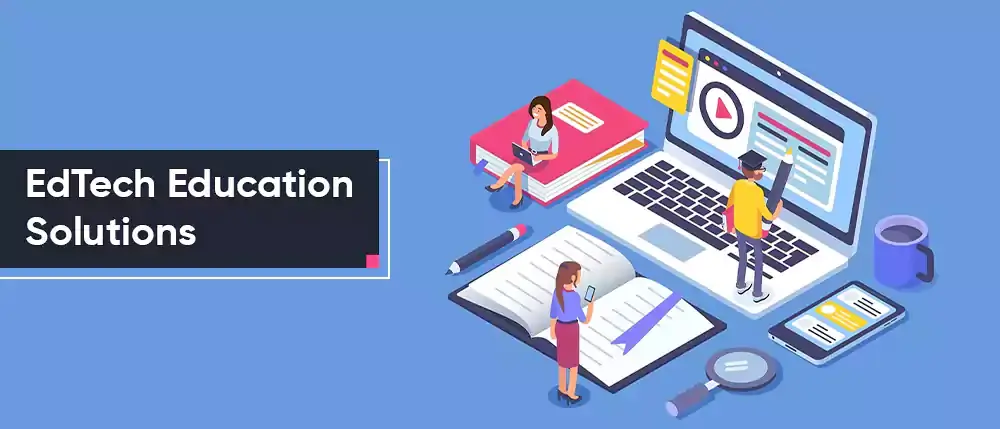
Education propels the world forward. It dispels darkness and illuminates even the darkest corners of the mind. If there's one thing that can tackle the concerns, we as humans face, it's education. However, education by itself has been suffering from tons of diverse challenges prevailing in institutions of all shapes, classes, sectors and sizes.
From our side, we have been pointing out the challenges and their tech-driven solutions sector by sector, aspect by aspect and industry by industry so you could know how to fix them and pave the way for a better world.
In our previous posts, we discussed the concerns in running a language school. From maintaining multiple batches to evaluating student performances, we saw what hinders the progress of students and impactful learning and shed light on the solutions as well. If you haven't been following us, we recommend reading that and other previous chapters of our Digital Transformation in Education Guide series.
But if you have been, let's get started with today's topic, which is the challenges prevailing in the supplemental education sector.
What is Supplemental Education?
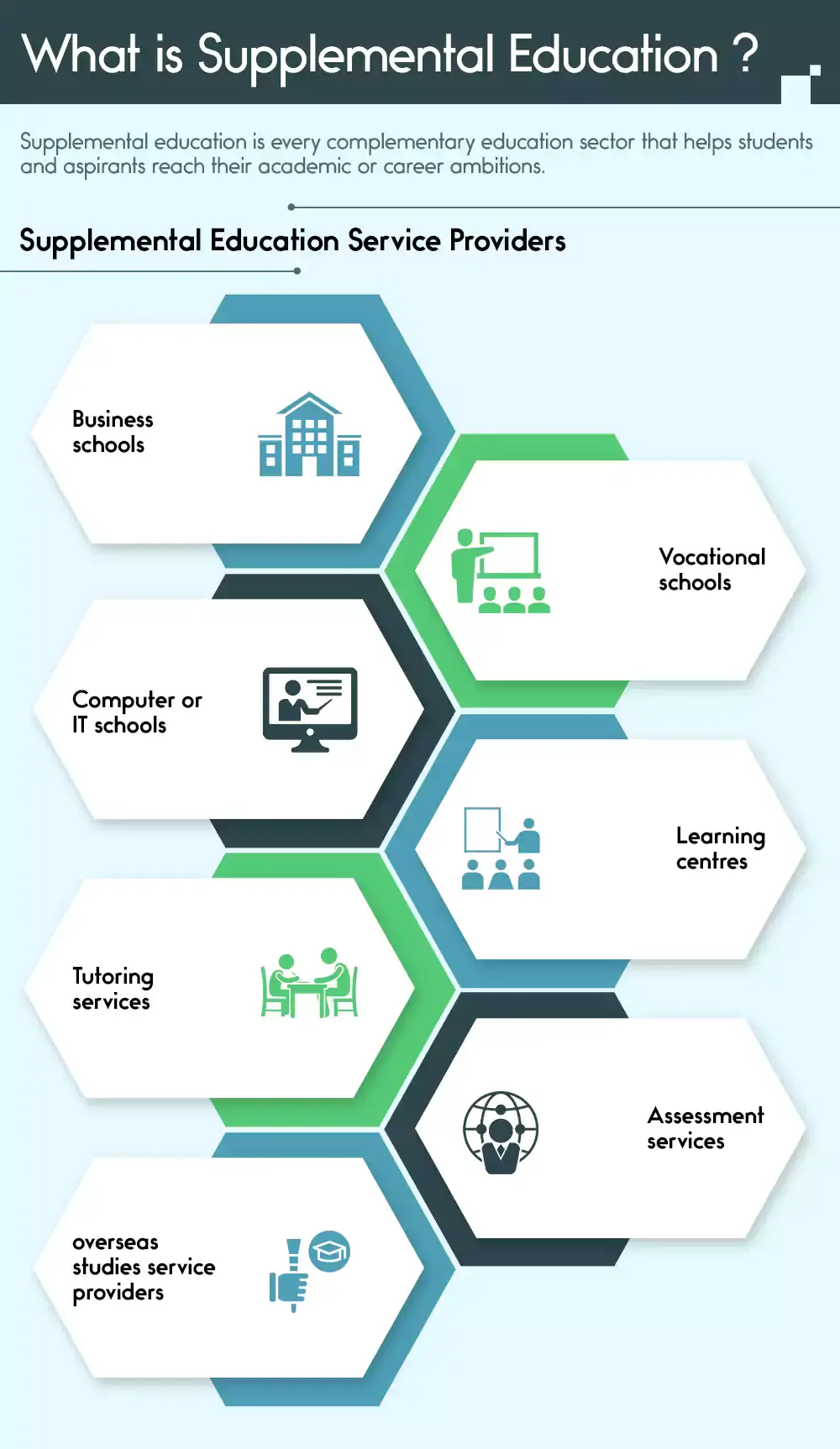
For the purpose of our understanding of the guide, supplemental education is every complementary education sector that helps students and aspirants reach their academic or career ambitions. To give you a better idea, let's break down supplemental education into the following:
- Business schools
- Vocational schools
- Computer or IT schools
- Learning centres
- Tutoring services
- Assessment services
- and overseas studies service providers
If you notice, all these individual sectors assist students in becoming better at their profession or guide them towards pursuing their interests. The world is filled with supplemental education services and if you're one of the service providers, this guide will be indeed resourceful to you.
Let's get started then.
<2>Some Interesting Facts and Numbers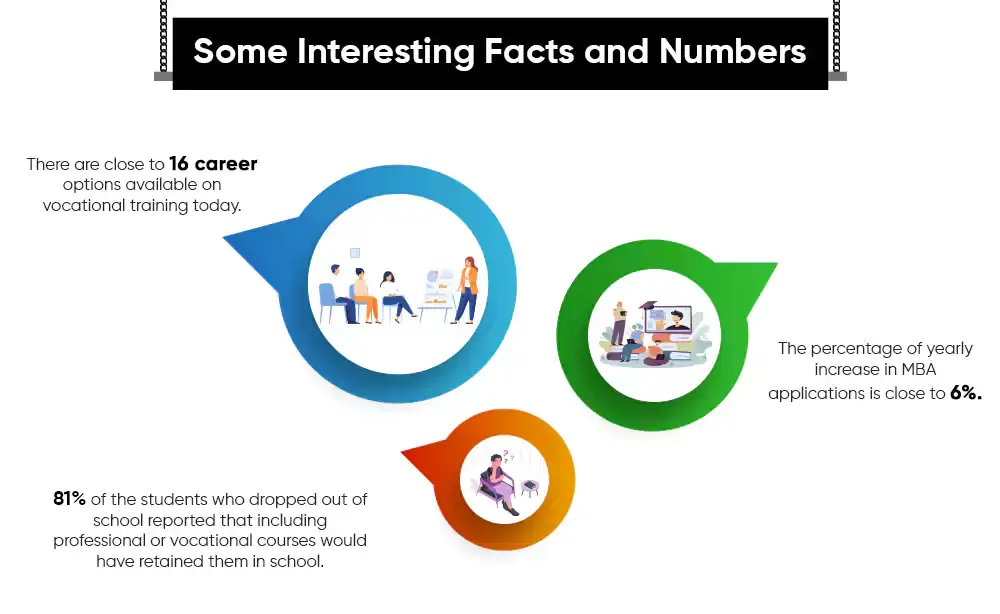
- There are close to 16 career options available on vocational training today.
- 81% of the students who dropped out of school reported that including professional or vocational courses would have retained them in school.
- The percentage of yearly increase in MBA applications is close to 6%.
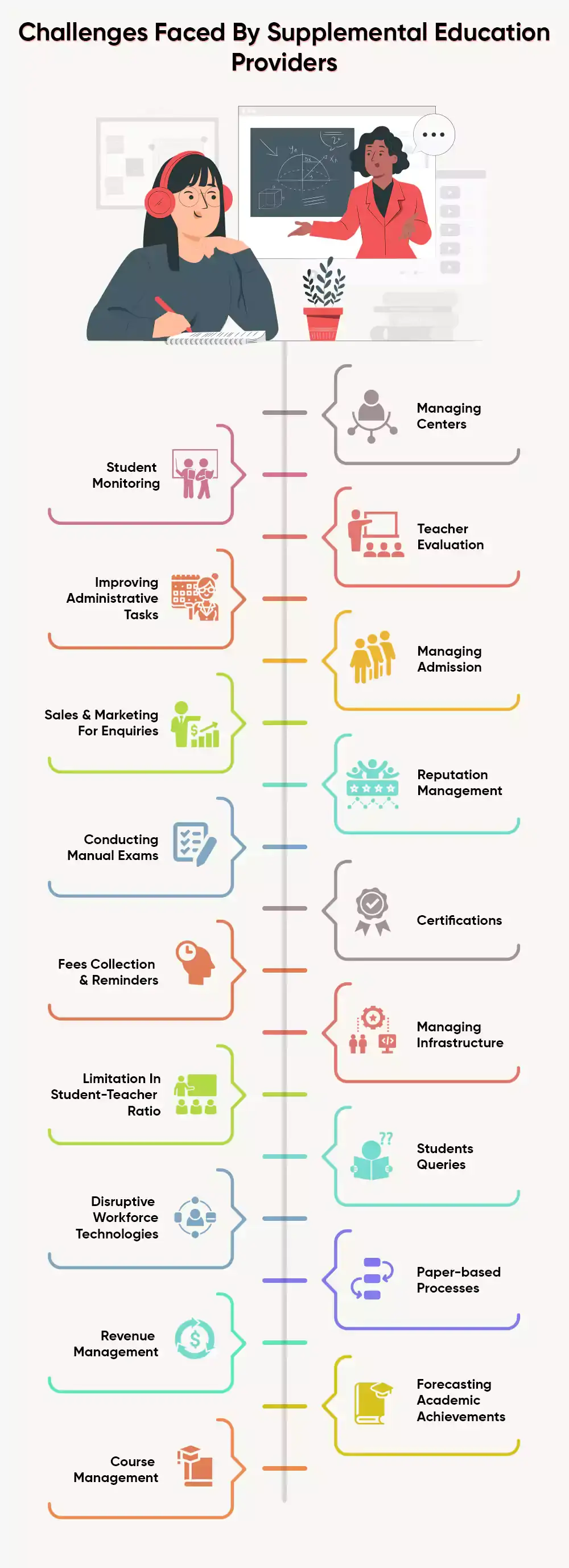
Though divided by student personas, learning modules, teaching structures, classroom setup and more, there are a few common challenges supplemental education service providers face on a daily basis. We have identified and handpicked some of the most predominant ones. Let's look at what they are.
Managing Centers
A majority of these supplemental education service providers have branches or learning centres scattered around a geographical area. Some of the popular ones even have a global distribution of their centres. What happens under such circumstances is the administrators and stakeholders find it difficult to manage multiple centres at once and deliver a uniform learning experience across their brand.
With each centre, administrators have to compile and maintain applicant details, admissions, welcome materials, fees, receipts and invoices, staff and rosters, tech or teaching infrastructure, centre materials and more.
When an offline or an obsolete mechanism is implemented to track and maintain all these diverse requirements, there are tons of scopes for errors and imbalances.
Student Monitoring
Business schools, vocational training institutes and the likes have to provide individual attention to their students to not only make a mark for their brand but help their students achieve excellence as well. Without individual attention or adequate student monitoring practices, students cannot be prepared for the real world and its requirements.
From tackling absenteeism and dropouts to ensuring the progress is evident for all students across all learning centres, an ideal portal that can pull out information instantly needs to be deployed. Without this, the outcome would be generic, where students wouldn't be employable by recruiters in their respective industries.
Teacher Evaluation
Supplementary education service providers require highly skilled professionals and subject matter experts in their talent pool. A business school student can understand marketing or finance concepts only if they learn it from industry veterans. This applies to vocational and other services as well. In that case, teacher evaluation has to be not only rigid but frequent to ensure teachers are updated in terms of market happenings, understandings, expectations and more. However, there are no proper metrics or tracking mechanisms in place at most supplementary education institutes.
Improving Administrative Tasks
Administrators are the ones who take care of everything at the backend of institutes' operations. While teachers are accountable to students and students are to themselves, administrators are accountable to both. They have to do tons of redundant tasks daily from invoicing and making payments to finding new vendors and ensuring admissions volumes are increased. With most of them being manual and offline, administrators are finding it tough currently.
Managing Admission
Speaking of admissions, this is a crucial phase in the process cycle of administrators. Once a lead is qualified into sales, admission counsellors pass on the applicant to relevant stakeholders. From that instance, they have to take care of triggering admission processes such as document submissions, SOP acknowledgement, photographs, identity proofs collection, fee receipts, distribution of study materials, welcome notes, orientation and more.
While these could be all brought under one module and automated, they are done individually by several stakeholders today. This delays admissions processes and gives rise to back-and-forth communication between applicants and institutions.
Sales And Marketing For Enquiries
An aspirant exploring multiple schools or institutes hunts for authentic information on diverse questions such as fees structure, instalment options, placement assistance, pedagogy, visiting professors, course modules, industry relevance, campus facilities and more. Instead of several fragments of information, they look for a compilation of facts and information that would allow them to make better decisions on joining an institute.
But because obsolete mechanisms are still practiced in several institutes, sales and marketing enquiries are still manual and time-consuming. Information is provided on calls on a need-to-know basis because of the mindset of the staff. For distance education, students have to rely on information they receive this way. This not only increases the chances of students dropping out before admissions but results in bad word of mouth as well.
Reputation Management
Word of mouth is a decisive element. What a student hears from another student about an institute can significantly influence their decisions. That's why institutions need to maintain their reputation both online and offline. By reputation management, it is not enough to flaunt benefits, placement rations, accreditation and more but pay attention to feedback, criticism and frustrations of students as well. But institutes hardly take care of this as they need separate staff and team for this. What's worse is that a lot of institutes don't have a proper online visibility or channel.
Conducting Manual Exams
In the age of the internet, manual exams are conducted by a lot of institutes. Paper-based assessments are distributed and collected from students. Besides, evaluation is manual and so is grading. This happens for each and every batch across every learning center part of the institution. With such huge volumes, it is impossible to provide individual attention and feedback. This drastically reduces employability of students.
Certifications
A certification is a proof that a student has completed a course from a particular institute in a particular duration of time. All the efforts students put in boil down to that one certification they could show to their potential employers or higher education institutes. In that case, care has to be taken on the disbursal of certification.
This means manual intervention has to be avoided. But that's not the case today as several stakeholders still manually verify certification details from spreadsheets or journals and give a final confirmation for printing. Seeing a misspelled name or a wrong detail on a certificate is the last thing a student would want to go through.
Fees Collection and Reminders
While fees are collected in advance at most supplementary education institutions, a majority of them offer instalment facilities to boost their sales and provide opportunities for people from all walks of life. In that case, reminders have to be sent to relevant students for their fee’s payment.
Managing Infrastructure
Campus infrastructure is the USP of many institutes out there. From the lab facilities they provide to libraries, campus life, placement cells and more, infrastructure defines the credibility of an institution in the eyes of an applicant.
But the larger the infrastructure, the harder it is to maintain. From public space decorations and cafes to lighting, fixtures, facilities and inventories, administrators have to take care of every tangible and intangible aspect in a campus. And for each aspect, they have to coordinate with respective vendors, facilities management staff, move paperwork, get approvals, modify proposals and do more.
Limitation In Student-Teacher Ratio
For a seamless knowledge transfer (from teacher to student), topic assimilation and optimum individual attention, the ideal student-teacher ratio should be 30:1. This means one teacher for 30 students. However, this ratio jumps to more than 40:1 in several institutions due to staffing and planning issues. In physical classrooms, higher student-teacher ratios would disconnect students from their learning and their teachers.
Students Queries
Students have queries at any given point of time. Well, that's only a good sign of progress. When queries arise in the minds of students, they need to get them resolved at the earliest for them to make further progress. But with current modus operandi in institutes, they have to wait for the next working day to get their doubts clarified. And because teachers or professors are the best sources for resolutions, students hardly have an alternative way as well. This, to an extent, stalls learning and their ability to apply their understanding to concerns before them.
Disruptive Workforce Technologies
Theoretical knowledge can help students understand concepts and get good grades but to make it big in their respective industries and teams, they need optimum practical skills. The more hands on they are at their work and its related tools and techniques, the smaller the gap between education and real-world problems will be. That's why students need disruptive workforce technologies in their institutes in the form of labs, incubator programs, practical units and more. These technologies should be made accessible to them at any time as well.
Paper-based Processes
A supplemental education institution has tons of paperwork going on perpetually. Right from an admission form is filled (on paper of course) to receiving certifications (paper-based again), all the processes in the chain involve one form of paperwork or the other. And most of these are redundant that could be avoided or minimized. Because they are paper-based, they have to go through a series of approval and modification processes before they are validated for use.
And not just students and teachers, tons of administrative tasks involve paperwork as well. These together delay corresponding tasks and processes and contribute to harmful impacts on the environment as well.
Revenue Management
Once revenue is generated, it has to be allocated or channelized for the smooth functioning of the institution. The salary of staff, payments to vendors, construction of new classrooms or lab facilities, bringing in placement cells, industrial visits, study materials and more, revenue management is tedious when done using obsolete mechanisms.
Forecasting Academic Achievements
The credibility of institutions is measured not by the number of students they have in their classrooms, their teaching methodologies, the number of staff or their campus locations. Credibility is established through academic achievements. From the number of students who excel in campus placements to those who achieve something remarkable in their research or competitive exams, academic achievements set benchmarking standards in the education sector. That's why it is crucial for institutions.
For an institution to stand out, it should be able to have a clear academic goal and progress forward with it. In offline systems, forecasting academic achievements with the help of past records is impossible. This deprives them of an opportunity to make amendments in their operations and teaching systems to accommodate diverse requirements to make a mark in academics.
Course Management
Course management is an inevitable task institutes have to follow perpetually to ensure their programs are relevant and in demand. Courses should be updated to keep abreast of latest happenings. Even a simple task like updating case studies is part of course management. Besides, courses have to be broken into the right modules and should have the relevant study materials, video content, faculty and duration. The courses should not be too easy or too difficult as well.
Apart from these, course management should also include spaces for those who are completely familiar with some concepts taught as part of the curriculum. For instance, a non-technical person trying to study data science wouldn't know coding or programming languages. Course management should dictate how such students can transition into the modules seamlessly.
Tackling The Solutions Posing The Supplemental Education Sector
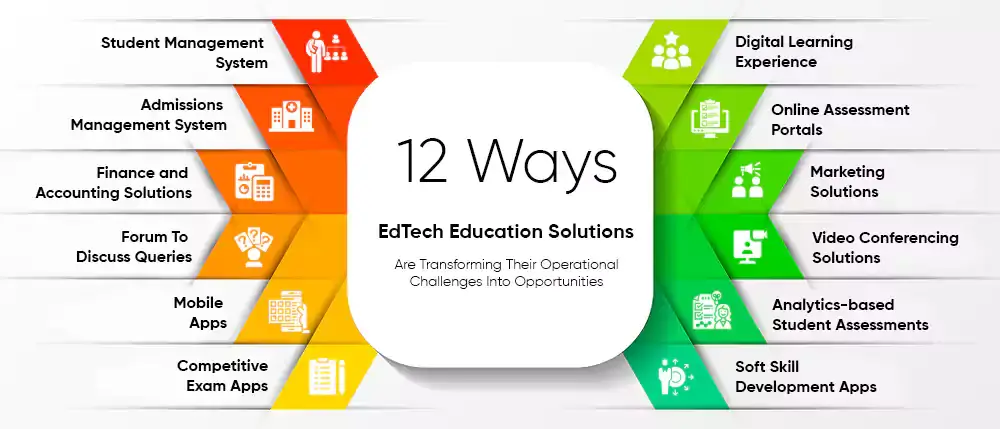
If you run a supplemental education institute and relate to the concerns we shared, we are quite sure that you would be a little paranoid about the solutions to them.
But don't worry. A myriad of tech-powered solutions to the challenges we discussed exists.
If we've presented the concerns, we would present the solutions as well. Let's explore what they are.
Student Management System
A student, from when their program starts, generates tons of data on a daily basis. To put all the data to good use and optimize institutional operations, efficient student management systems are needed. With the help of a management system, you can take care of the following:
- store and maintain student information such as attendance, grades and more
- generate student-specific reports
- manage faculty and rosters
- schedule programs and courses
- coordinate communication among different stakeholders
- manage payroll and do more
The best part of student management systems is that they can be tailored to meet your institution's specific needs and demands so you have more purpose-driven outcomes.
Digital Learning Experience
With tech implementations, institutions can pave the way for a digital learning experience through videos, graphical visuals and imageries, immersive content, gamification, audio formats or podcasts, infographics and more. With digital learning, retention is more and there are several ways to access content, retrieve them, collaborate with peers and get additional (and resourceful) information wherever necessary.
Admissions Management System
An ideal admissions management system streamlines the entire process of admission of new students and even automates them. Stakeholders like administrators have to simply supervise or intervene only when escalations or queries arise. With these systems, applicants can sign up using their credentials, create profiles, modify them, transact money for fees, get invoices and receipts, attach necessary documents, get updates on admissions progress, avail loans and finance assistance and more.
From an administrator's perspective, this also gives them an idea on admission rates and estimated staffing and other resources for an academic year or batch.
Online Assessment Portals
With online assessment portals, paper-based examinations can be completely done away with. With a simple portal access, diverse evaluation methods can be implemented. The portals are fool-proof and minimum supervision is also required. The best part is that students can take up online assessments from wherever they are. Besides, these portals can integrate additional technologies like voice recognition and dictation to include specially abled people to take up examinations seamlessly.
For teachers, all documents arrive at one single place, making it easier for them to evaluate. And if it's a competitive exam, evaluation can be automated as well.
Finance and Accounting Solutions
Redundant yet crucial tasks like generating income and expenses reports, budgeting and fund allocation, invoicing, payroll management, pay-outs, vendor management and more can be easily managed and executed through finance and accounting solutions. The calculations on these are more precise and easier to track any given parameter. Because they are collaborative, associated stakeholders can be easily accessed for approvals and modifications. Accounting solutions become more inevitable with more learning centres.
Marketing Solutions
Tailor-made marketing solutions allow supplemental education institutions to manage and maintain their social media handles, automate posts, run advertisements, draft emails, run email campaigns, view metrics, simulate campaigns, refine target audiences, track campaign performances, address comments and do more. Brands can establish a solid presence online and simultaneously maintain a good reputation, which becomes crucial when there are more competitors.
Forum To Discuss Queries
An online forum as part of your website or portal can be a good place for students, teachers and stakeholders to start and have discussions. These discussions could be anything related to your institute's fees structure or placement assistance to updates on exams and attendance statistics. One place that brings everyone together has diverse benefits and use cases.
Video Conferencing Solutions
Video conferencing tools eliminate geographical barriers among students and teachers. With this, debates, classes, training sessions, workshops, webinars and more can be conducted easily with virtually unlimited attendees. A major benefit is that an institution can have more than one batch attending a class at the same time.
Mobile Apps
Mobile apps development are value additions to supplemental education institutes as they can serve personalized purposes to students, teachers and administrators. Students can pay their fees or download course content. Administrators can send updates on campuses and placements. Teachers can share notes, evaluate and respond to queries, share schedules and do more. Mobile apps also support video conferencing solutions, collaborative learning, voice recognition, location-based services and more for institutions to make use of.
Analytics-based Student Assessments
No matter how much attention teachers give, individual care cannot be completely ensured in institutes at any time. For that, one needs bots and algorithms that can work on unlimited data and tirelessly spot patterns to come up with inferences. That's where artificial intelligence systems with advanced analytics come in. With these algorithms, personalized stats and metrics for students can be retrieved in bulk.
Teachers can look at a student's profile and gauge their strengths and weaknesses, interests, preferences, active time of the day, when they zone out, when they are the most attentive, their social circles and their influence and more to offer custom learning modules. With adequate data, assessment outcomes for the future can be estimated accurately.
Competitive Exam Apps
Competitive exams are highly niche exams that require abilities like quick thinking, quantitative aptitude, time management, learning skills, educational hacks and more for students to crack. Competitive exams are conducted for diverse purposes from public services to university admissions.
With competition being radical, students need to practice and master their problem-solving skills and stay updated with concepts and their applications. That's where competitive exam apps come in. Through archives of assessment papers, practice problems, mock interviews and more, competitive exams can help students plan, prepare, evaluate, analyse and get better.
Soft Skill Development Apps
Being technically brilliant isn't enough to become employable. In fact, some of the most eligible students and aspirants fail to progress in their ambitions because of their lack of soft skills such as communication, planning, etiquettes and more. But thankfully, there are soft skill development apps that can be developed and deployed to assist them get placed successfully. This completes the full circle an institute can offer in terms of assistance, support, faculty, course modules and content.
<2>Case Study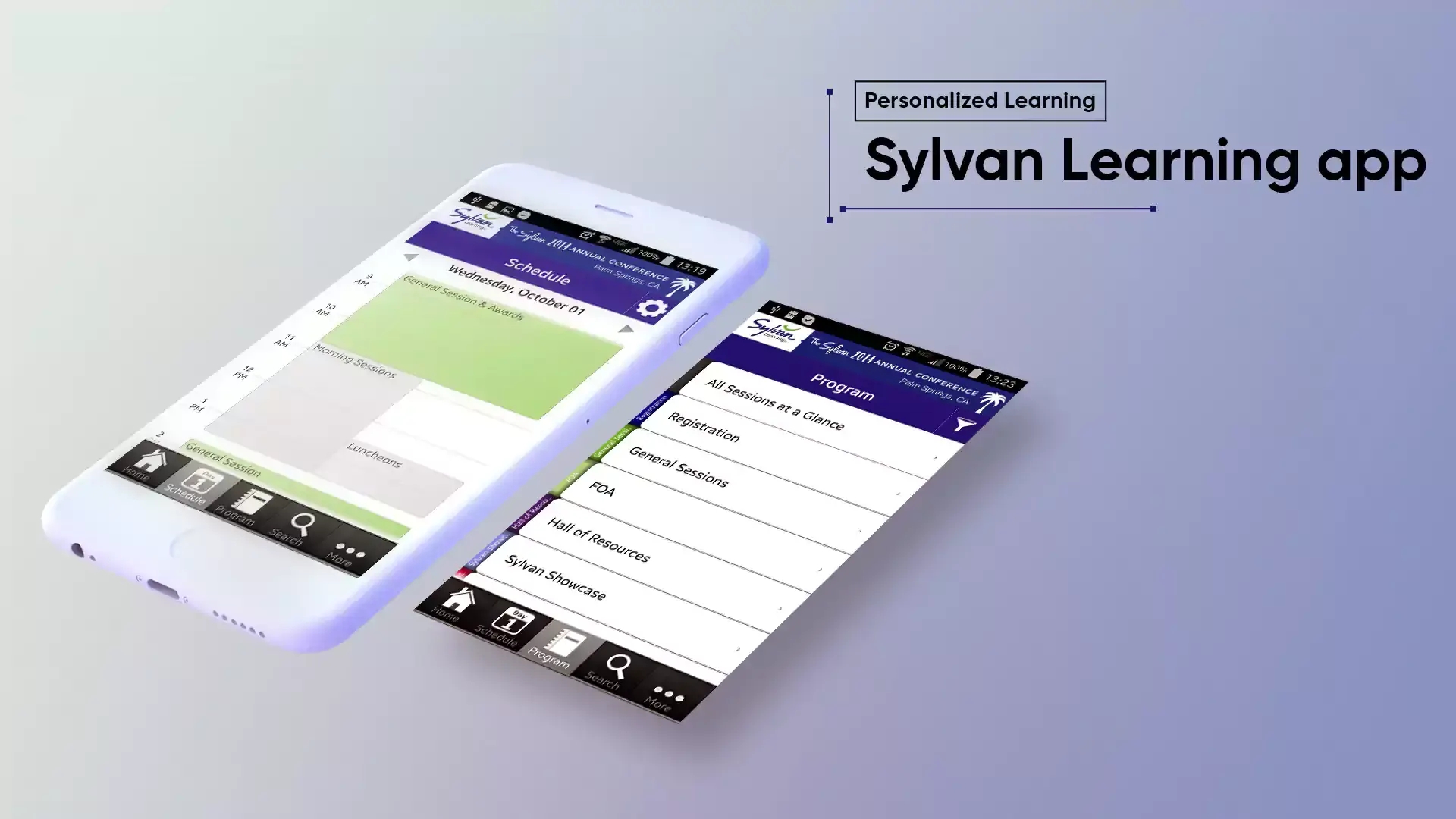
One of the premier supplemental education brands in the US, Sylvan Learning has been a pioneer in the country offering top-notch K-12 learning solutions. It has been in the industry for over 40 years with over 75 centres in the country. Over the years, the brand has consistently pushed its limits in terms of offering optimum learning experiences and solutions to students and teachers in its ecosystems.
For over 30 years, the company had been delivering paper-based solutions in its learning centres, making the entire process time-consuming and tedious. From requiring a pile of books for teaching and learning to labor-intensive teaching mechanisms, it constantly looked for alternative ways to make education not only more accessible but engaging and impactful as well.
That's when it decided to embrace futuristic and trending technological concepts to deliver what it always prioritized – excellence. It developed and rolled out the SylvanSync, a proprietary teaching delivery program designed for its centres.
When it decided to come up with this, the brand was clear that it would be deployed only in its centres and not make it available on app stores. This solution offers a personalized learning path to students, which is based on their performances on assessments and evaluations.
This means that based on the assessment results, the solution adapts to the outcomes of students and recommends personalized course materials, lesson plans and more. This helps the student identify their strengths and weaknesses, the subjects and concepts they are good at, those they struggle with, the topics they need to focus more, the materials they need to do better and more.
A student works on excelling at their respective interests and pursuits this way with them competing against themselves.
From a teacher's perspective, this solution helps build a better relationship between teachers and students – the one that is based on respect and trust -, individually monitoring the progress of each student, paves the way for direct intervention in students' academic journeys and more.
The solution stands as an example of what supplemental education brands can do in terms of tech adoption to make learning enriching and teaching more engaging.
The Future of Technology in Supplemental Education
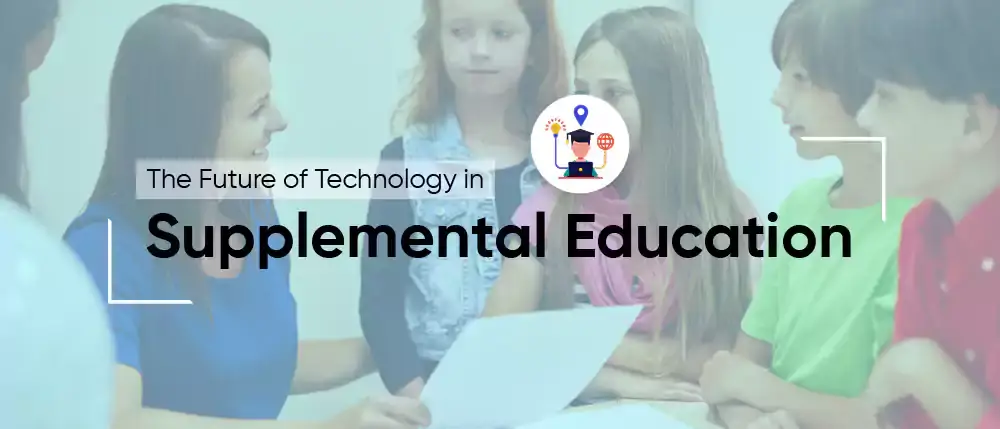
While these segments are yet to upgrade to the current advancements, we are excited to envision a world where futuristic technologies are deployed for more impactful learning and teaching.
We are looking at increased integration of technologies like artificial intelligence & machine learning, augmented reality, virtual reality and more in supplemental education. Through artificial intelligence, student achievement and institutional excellence can be gauged and even optimized for personalized learning.
With augmented and virtual reality technologies, students can get an immersive experience and hands-on exposure to their relevant tools, techniques and concepts. On-demand labs and facilities could also be a probability with students being able to rent spaces to practice and hone their respective skills.
Wrapping Up
Supplemental education is inevitable and if you're an institute owner or an administrator, you need advanced solutions like management systems, portals, applications and more to optimize your institute.
That's why we urge you to get in touch with us for all your needs. We would listen to your institute goals and tailor services and programs that would help you take your institute to where it truly deserves.
Get in touch with us today.